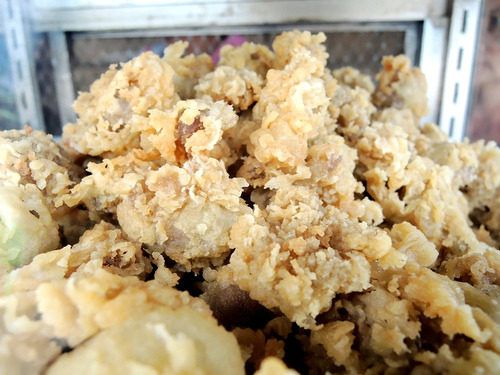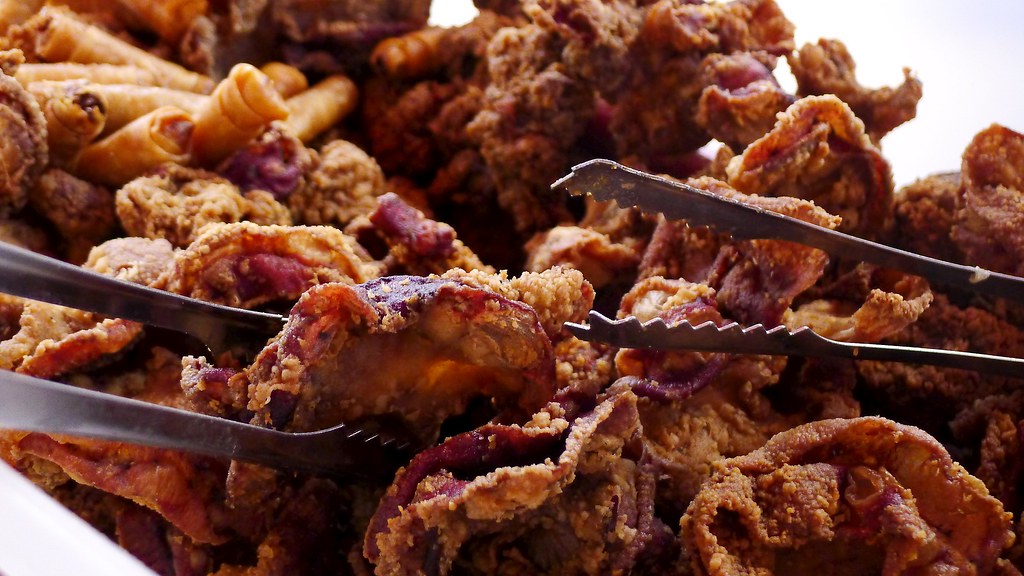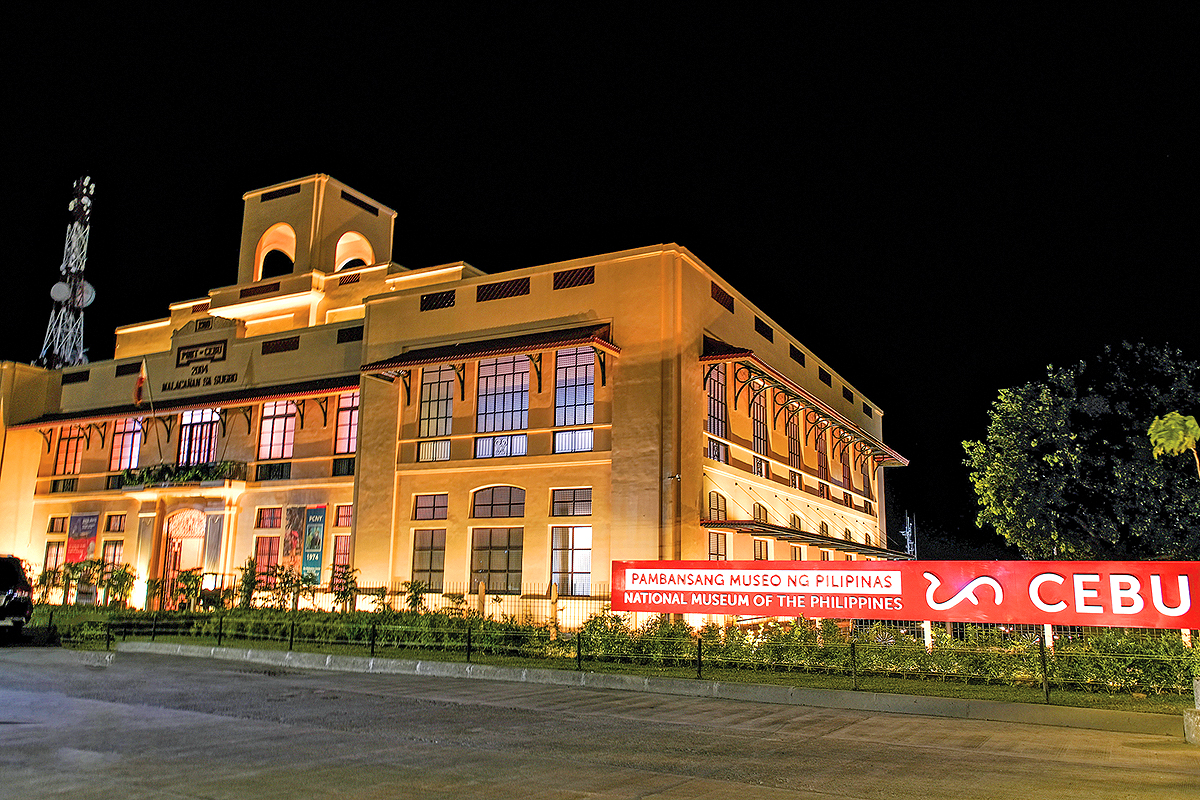Culture
Street Food in Cebu Everyone Must Try
Some of the delicacies and street food in Cebu everyone (locals and tourists) should try at least once.

They say the only way to truly know a city is through its food. Don’t get me wrong, a fancy restaurant is nice from time to time. But there’s a certain kind of authenticity that you get from the good ol’ street food. And surely, Cebu is definitely a city of gastronomical adventure.
We have the famous Balot (duck embryo) readily available in every corner. But that’s not all the city has to offer. For locals, these picks are almost a staple. For tourists, it’s definitely a must-try.
Some tips:
- Be mindful of where you eat.
- Be more cautious if you have a sensitive gut.
- A forgiving palate is appreciated – not all will please you.
- An adventurous spirit is key.
Banana Cue or Pinaypay

Fried banana coated in sugar, served two-ways – caramelized or drizzled. This is a popular afternoon snack for students. Just before the classes end, banana cue vendors set up their carts just along the school’s gates, frying up a hand of bananas in a boiling pot of oil. For only 10 pesos (12 pesos in some areas), the subjectively healthy snack is best consumed hot with a glass of Buko (Coconut) Juice.
Where to find: Almost anywhere in the city, near schools.
Peanuts

Peanuts aren’t really new or exciting to anyone, especially when you can have it at almost any part of the world. However, we, Filipinos, like to serve them in variety – steamed, fried, salted or spiced. You can get a bag for as low as 10 pesos up to 25 pesos, depending on the size. And if you ask nicely, the vendor can give you an extra scoop more. Score!
Where to find: Almost anywhere in the city. Beside University of San Jose Recolletos – Main Campus.
Sa-ang (Boiled Spider Shell)


Not many would be too keen for its taste and looks (probably), but if there’s one thing you must try on this list, it is this. A common source of protein for many locals in Cebu and Bohol, Sa-ang or Spider Shells is an interesting find. Housed in a spiral shell, Sa-ang is extracted, boiled and strung together in a banana stick. Don’t forget to dunk it in spiced vinegar and pair it with Puso (Hanging Rice).
Where to find: Freedom Park
Proben

Now this one is not for the faint of heart. So, prepare for a rough gastronomical adventure. Proben is a deep-fried proventriculus of a chicken, dipped in cornstarch. That sounds sketchy, doesn’t it? But many Cebuanos swear by it, especially when it’s paired with its special sauce.
Where to find: Back of Cebu Doctor’s Hospital. Near Cebu I.T. Park
Ginabot

A popular dish at Pungko-pungko (food stalls), Ginabot is a deep-fried pig intestine that is coated in cornstarch, also known as Chicharon Bulaklak. Best paired with vinegar with a handful of white onions and chili. Locals can guarantee that a taste of the crispy pork crackling will make you forget what it’s made of. Yes, it is THAT good.
Where to find: Near Redemptorist Church. Capitol Site. Across Apple Tree Suites. Salinas Drive.
Culture
Cebuano Pride: The National Museum of Cebu

Pride of Cebu
By Eva Gullas
photos courtesy of DOT

Cebu City Tourism’s Neil Odjigue, Cembeth Hortillano and CCTC Chairperson Joy Pesquera

Museum Director Jeremy Barns, Maryanne Arculli, Andronik Aboitiz and wife Doreen, Amanda Luym

Some of the abstract art from the New York collection

Writer Eva Gullas beside Elmer Borlongan’s Battle of Mactan
Culture
The Uncommon Traditions that Mexicans and Filipinos share when celebrating the Day of the Dead.

Dia de los Muertos
By Allain Dumon Fonte
The 2nd of November is All Soul’s Day, a holiday that is very important to many Filipinos to remember our loved ones who passed on. This is also widely celebrated in Mexico as “Dia De los Muertos” or in English, “The Day of the Dead”. And Mexicans celebrate the 2nd of November grander than they celebrate Christmas. Well, you can witness it from the Disney movie, “Coco”.
As All Soul’s Day or Dia de los Muertos is about to end, here are some interesting traditions and superstitions that Filipinos and Mexicans share:
1. IT IS NOT ON THE 31st OF OCTOBER
Dia de los Muertos or All Soul’s Day is not practiced on October 31st or on the Hallow’s Eve as many other western cultures practice; but we celebrate it on the 2nd of November. We celebrate November 1st as All Saint’s Day or the Day of the Holy, while in Mexico they call it Dia de los Innocentes or Dia de los Angelitos to commemorate the children who died too early in life.
2. THE RITUAL
Both in Mexico and in the Philippines, we visit the grave of our loved ones and we clean it well. This is a ritual to honour their resting places and to let them know that they are never forgotten.
3. FLOWERS INVITE SPIRITS
In Mexico, they believe that the scent of flowers attract spirits. So the flower offerings are invitation to their dead loved ones to visit the living families. While in the Philippines, we believe that flowers offered to the dead exalt the souls and somehow fill in the sadness that we feel when missing our dead loved ones.
Most of the time, Filipinos choose all-white flowers to offer because white is the absence of colour, which means the absence of Joy and happiness. White also symbolises purity of soul which we hope our dead loved ones will attain as they journey to heaven. While in Mexico, they have the yellow Mexican marigolds as the official flowers of the dead that will guide them in their journey to the afterlife.
4. THE LEGEND OF THE MONARCH BUTTERFLIES
Both cultures believe that monarch butterflies are dead loved ones who visit us and show their appreciation that we have not forgotten them. A presence of monarch butterflies also means that our dead loved ones are always there guiding us and looking after us.
5. A PICNIC IN THE GRAVEYARD
Spending a night at the graveyard and picnicking with the rest of the family may sound very creepy to many; but to both Filipino and Mexican cultures, picnicking and spending a night at the cemetery is a must to show our love to our dearly departed. It is the only time in the year that families gather and tell stories of the dead loved ones and how colourful or how great their lives were.
6. FOOD FOR THE DEAD
In Mexico, they have what they call “ofrendas” or an altar where the pictures of their dead loved ones are displayed and offered with flowers, candles, and their favourite food. Very similar to the Filipino culture of cooking the favourite food of our dead loved ones and everyone in the family enjoys the food for dinner.
My family tradition involves me driving all the way to Colon street and buy that famous Snow Sheen’s “pancit canton”. This is my granddad’s favourite snack. Sadly, the old Visayan Restaurant is no longer there. My late uncle and my late grandpa love their sweet ad and sour fish. We also set up an “ofrenda” on their graveyard and eat their favourite food while picnicking in the cemetery. We do not spend a night in the cemetery; but while we are picnicking there, we usually play the songs of Pilita Corrales and Susan Fuentes that my late grandpa used to listen every afternoon while enjoying his coffee, pan de sal, and pancit canton.
What about your family traditions? Share your thoughts by commenting to this article.
 MODEL: Michael Joseph Mortola Enriquez & Alexis Wingfield
MODEL: Michael Joseph Mortola Enriquez & Alexis Wingfield
PHOTOGRAPHER: Gianne Paolo Anciano
HMUA/DESIGNER: Hazel Ocaba
STYLING: GPA Lifestyle + Clothing
Culture
Catch Ted Lasso the Emmy Award Winning Comedy Series on Apple TV+

Rating: *****/ *****
The multi award–winning comedy series airing on Apple TV+ is one of my favorite shows. Ted Lasso starring Jason Sudeikis is about a fun good-natured American football coached hired by a British soccer club (AFC Richmond in London) to become their new coach. In spite of the fact that Ted has no experience or knowledge about British football/soccer, his positive demeanor and charm helps him overcome the animosity of the team’s players, staff and fans. Eventually Ted wins over the team and the locals as they fight for position in the English Premier League.

The show won the 2021 Primetime Emmy Award for Outstanding Comedy Series and 7 Emmy Awards in its 2 seasons and Season 3 is just around the corner. You can catch Seasons 1 & 2 of Ted Lasso on Apple TV+















You must be logged in to post a comment Login